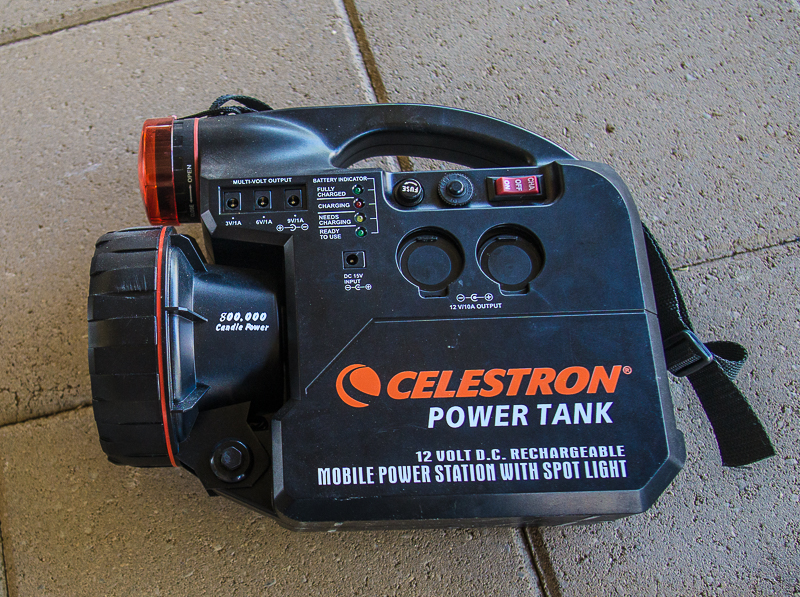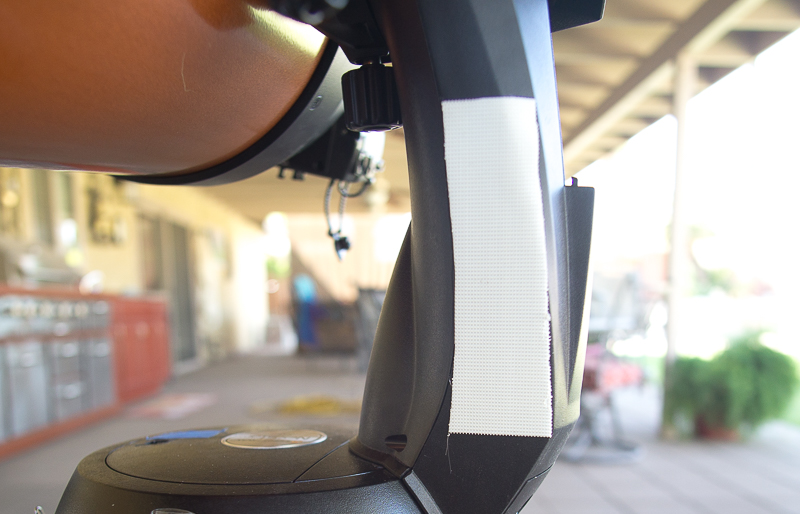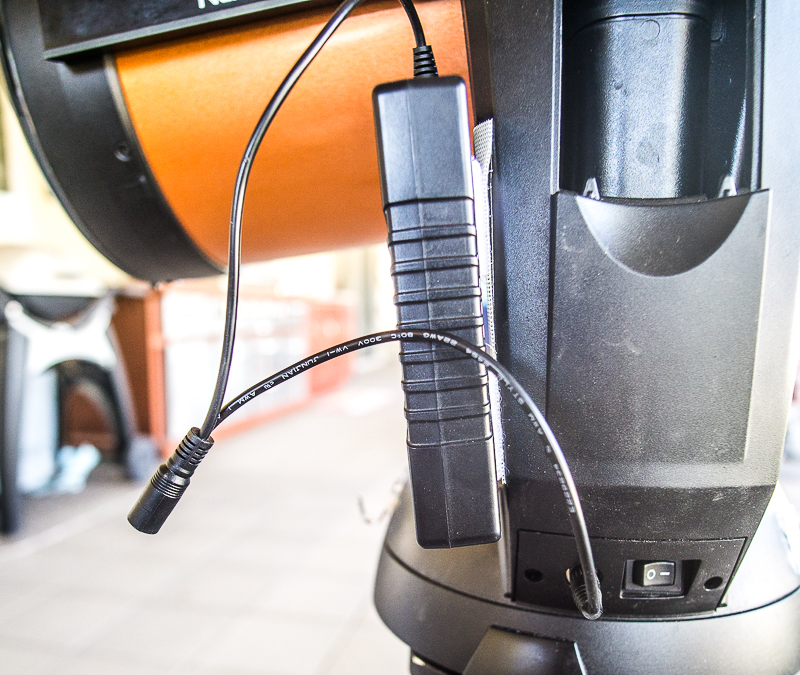Powering Your Telescope
If you buy a telescope with “Go To” functions, which I advise, you’ll need a way to power it. Motor driven mounts such as the NexStar Alt-Az mounts cannot be manually adjusted to view objects. As discussed in Part 3 of this series, eight AA batteries can power the NexStar telescopes. Unfortunately the batteries don’t last very long.
Just like a computer or other electronic device, a Go To telescope can be powered by a 120-volt adapter. Often these adapters are optional items and are not included with the telescope. Since I use my telescopes on camping trips, a 120-volt power source isn’t an option, unless I want to the turn on the inverter in the camper on and then run a long extension cord through the campsite to the scope, which can cause a trip hazard at night.
Since this isn’t practical for me, even at home, I never bought a 120-volt charge adapter.
For remote locations the most practical power solution is an external . . .
Battery
When I first bought my NexStar I also bought a Celestron Power Tank. I knew it wasn’t the optimal solution being rather large and heavy. But it had a long cord and the proper size tip and configuration to power the scope.
The Power Tank has a 7 amp hour capacity, and can provide 10 amps of power. Given the NexStar’ consumption is only .75 amps without any accessories plugged in, there is plenty of power. Even with optional accessories such as a GPS module, focus motor, or camera one won’t exceed 3 amps of power demand.
Included with the Power Tank is an AC adapter for charging the battery. Integrated into the unit is a powerful flashlight (white) and a smaller red light. The red light is useful when working around the telescope, as it doesn’t hinder your night vision the way a white light does.
It comes with a long power cord to connect to the telescope and plugs into one of the two cigarette lighter sockets in the tank. The long cord is needed because the telescope turns when aligning it and slewing to objects in the night sky.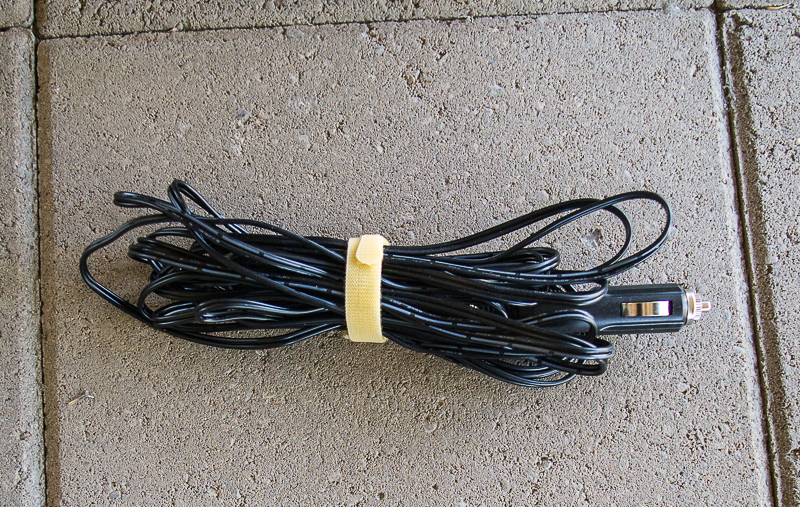
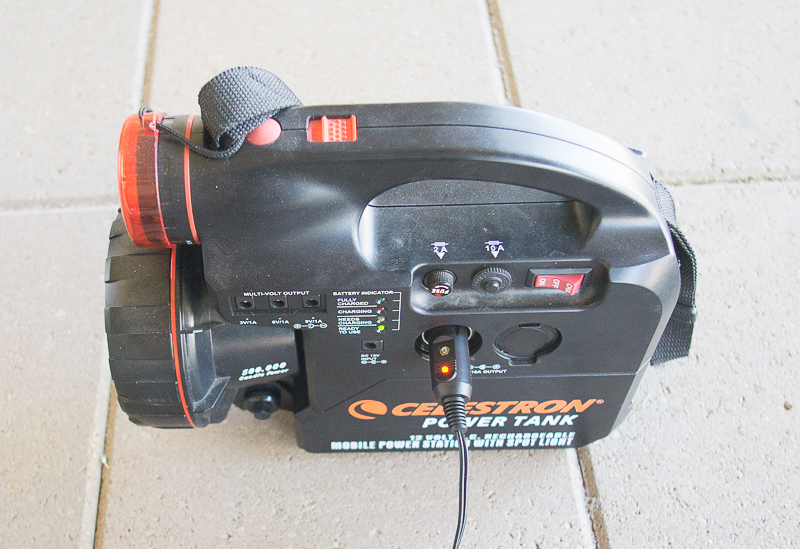
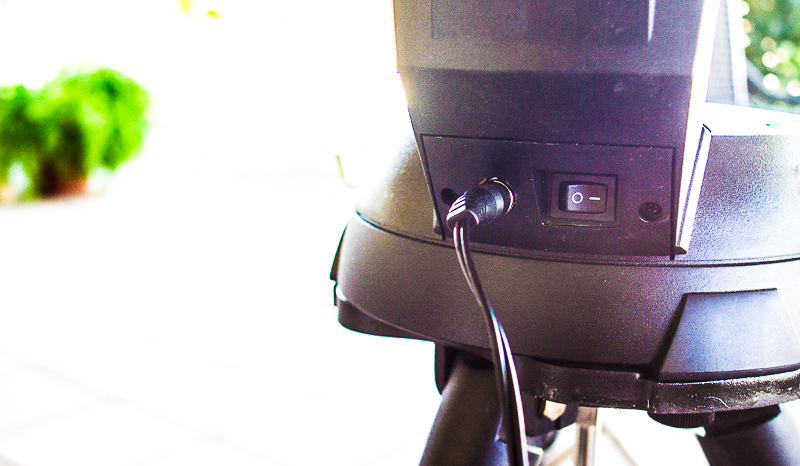
Inside the Power Tank is a sealed lead-acid battery, which can be replaced, although Celestron does not sell these batteries or provide instructions on how to do it. I replaced mine 3 ago, which wasn’t too difficult. Google and YouTube are probably your friends if you want to replace the battery.
Battery Capacity & Performance
Voltage Drop
With all my accessories attached and a lot of slewing (moving the scope to many objects), the Power Tank lasts for a couple nights of viewing. However, in addition to the cord wrap issue, the battery doesn’t perform as well as other types of batteries (lithium-ion). This is due to voltage drop of the lead-acid battery.
A simplified explanation of battery types is in order. A lead-acid or NiCad battery will slowly drop the voltage. So after a few hours it may only be delivering 11.75 volts. A lithium battery will not have as much voltage drop. However when the capacity of the lithium battery is used up, the voltage takes a big sudden drop. When the voltage goes much below 12 volts, the telescope doesn’t function well because it is so voltage sensitive, as are most consumer electronics. So what we need to know is a lithium battery, with the same amp hour capacity as a conventional battery, will power sensitive electronics longer.
Recharge Cycles
Any rechargeable battery can only be recharged so many times. A lithium battery can be recharged much more often. Some can be recharged by a factor of 3. So the higher price of lithium batteries gives you more recharge cycles and less voltage drop. Depending on the use, the price per recharge is about equal. The important thing for a telescope is less voltage drop with lithium batteries.
Celestron does sell a larger capacity Power Tank. It is less than twice as expensive, and has more than twice the amp hour capacity (17 vs. 7). So it you are interested in the Celestron brand Power Tank, the Power Tank 17 will cheaper than the Power Tank 7 in the long run. The 17 AH version even comes with an AM/FM radio built in.
Both of these Power Tanks use lead-acid batteries, which will discharge without use over time. So you have to keep an eye on them and recharge as needed or the batteries will fail early.
Cord Wrap
Because the power socket for the telescope is on the part that rotates, the cord can wrap around the scope. If the power cord gets too tight as the scope rotates, the tip of the cord or even the socket in the mount can be damaged.
This happened to me once and I had to buy a new cord.
I found a better solution.
TalentCell Li-Ion Battery Pack
This is a rechargeable 6000mAh (6 Ah) Li-Ion battery pack. Output is 3 amps maximum, which is more than adequate for my NexStar with all the electronic accessories added. Plus, it lasts longer than the Celestron Power Tank’s 7 Ah capacity because the voltage doesn’t drop as much.
More important to me is it is so small I can easily attach it to the upper arm of the mount without any chance of cord wrap. Additionally two of these battery packs cost less than one Power Tank 7.
The Talent cell comes with a 120-volt charging adapter, and a dual tip cord that allows the battery bank to be charged while the battery bank is in use. The tips fit into the telescope mount perfectly, in fact, they are a little more secure than the Celestron brand cord that comes with the Power Tank.
The top of the bank has the cord port, ON/OFF switch and a USB connection in case you need to power a second item, such as a smart phone running a planetarium app.
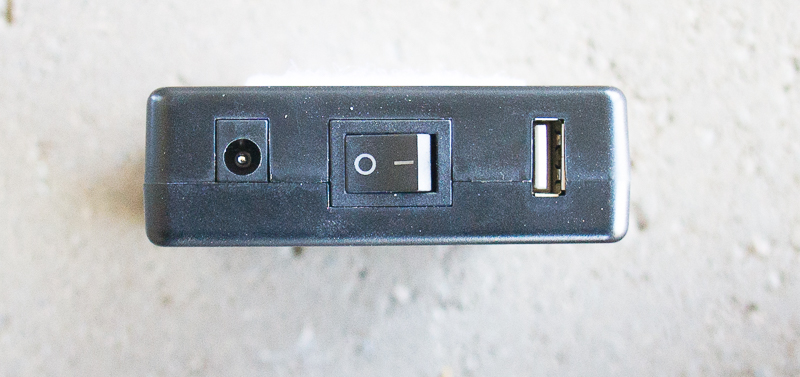
To attached it to the telescope arm I used Heavy Duty Velcro with an adhesive backing. It is very secure. I keep a box with two large rolls at home because Velcro is so handy for so many projects.
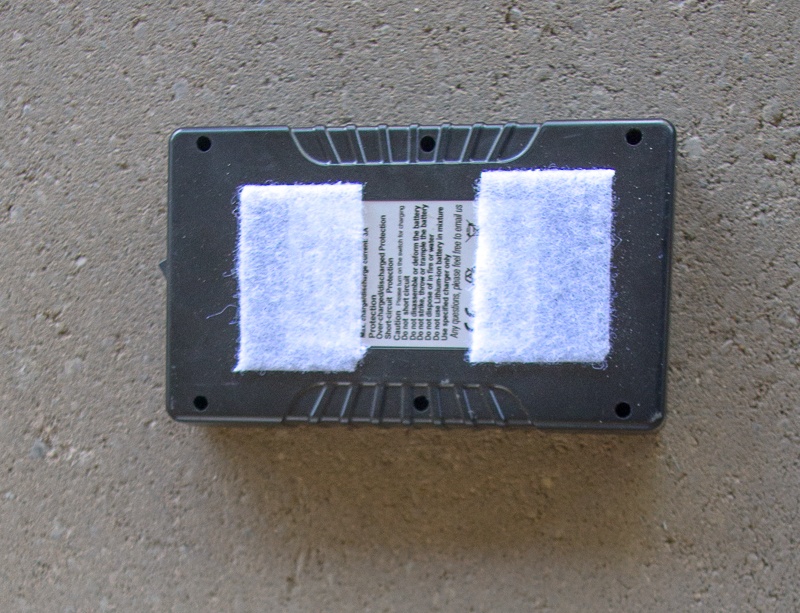
If you have a larger mount that will exceed the 3-amp requirement, TalentCell sells a slightly larger battery pack that should work with larger mounts (check the telescope specifications before purchasing).
Back to Part 3 Forward to Part 5
This website may be compensated for linking to other sites for sales of products. As an Amazon Associate I earn a small fee from qualifying purchases at no additional cost to the purchaser.

